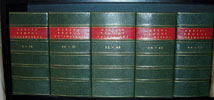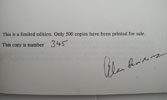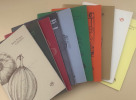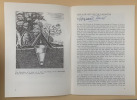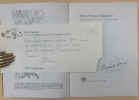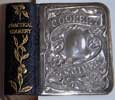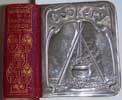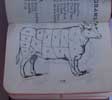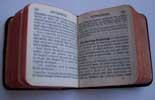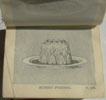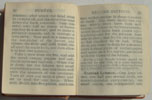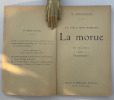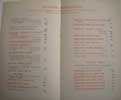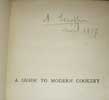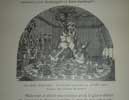A fine collection of 17th to 19th century sugar crushers.
Seven fine crystal and glass antique sugar crushers with the auction labels still attached.
Wrapped in tissue paper and stored in a cardboard black box with 2 maroon morocco labels and gilt text. A unique set.
- Elizabeth David [ED] (born Elizabeth Gwynne, 26 December 1913) passed away at the Royal Cornwall Hospital following a short illness, aged 84 years. She died in the early hours of 22 May 1992 having suffered a stroke followed two days later by another, which was fatal; She was buried on 28 May at the family church of St Peter ad Vincula, Folkington. A memorial service was held at St Martin-in-the-Fields on 10 September. After her death her four nephews decided they could not hold on to her kitchenware. It was decided that Phillips of Bayswater would handle the sale. On February 1994, ED's possessions were put up for auction, but nothing prepared auctioneers for the interest generated by the prospect of owning the utensils that helped revolutionise British cookery. A Phillip's spokesman declared "We expected to realise about UK£15,000, maybe £20,000, but we finally achieved £49,000. There was even an exclamation about the cook who spent £200 on one glass sugar-crusher. This collection of sugar crushers assembled by ED. were important 17 to 19th century home kitchen tools. Because sugar at that time was transported in dense sugar loafs that had to be managed in the households, broken down into small hard lumps, the crushers were essential. Now not used, needed nor produced, ED. was well aware of their uniqueness. From Alimentarium's online site, the history of sugar is explained well: "People have always known honey and, for a long time, it was the only sweetener used. Originally from New Guinea, sugar cane very soon migrated to Southwest Asia and aroused keen interest among the people who discovered it. In the 6th century BC, the Persians invaded India and marvelled at this ‘reed which gives honey without the need for bees. In the reign of Alexander the Great in the 4th century BC, sugar cane reached the Middle East. During Antiquity and the Middle Ages, sugar was a rare and expensive commodity, as with spices such as saffron and nutmeg. From the late 15th century, shortly after Christopher Columbus’ first voyage to America, sugar cane plantations developed in the West Indies, then South America, particularly in Brazil. Sugar became the top colonial commodity. It was at the root of the evil ‘triangular trade’, where European shipowners exchanged trinkets for African men, who were then sold as slaves in America. The ships then returned to Europe with products from the colonies, including precious sugar. In the early 19th century, in response to the English blockade on sugar from the West Indies, Napoleon ordered sugar beet to be grown on French soil. Andreas Sigismund Marggraf, a German chemist, had discovered the sweetening aspect of the beet in 1757. In 1811, the first economically viable sugar beet processing plant was built in France. Sugar became widely consumed in the late 19th century, as a result of the farming of sugar beet". A sugarloaf (see image #5 below) was the usual form in which refined sugar was produced and sold until the late 19th century, when granulated and cube sugars were introduced. A tall cone with a rounded top was the end product of a process in which dark molasses, a rich raw sugar that was imported from sugar-growing regions such as the Caribbean and Brazil, was refined into white sugar. The earliest record to date appears to be 12th century in Jordan, though reference to a cone of sugar is found in al-Zubayr ibn Bakkar's 9th century Arabic 'Al-Akhbar al-Muwaffaqiyyat'. In Europe, the sugar loaves were made in Italy from 1470, Belgium 1508, England 1544, Holland 1566, Germany 1573 and France 1613. When refining from sugar beet began in mainland Europe in 1799, loaves were produced in the same way. Until the mid-19th century, the British government used a system of punitive taxes to make it impossible for its colonial producers in the Caribbean to refine their own sugar and supply Britain with finished sugarloaves. Previously the Amsterdam industry had been similarly protected from the importation of East India white sugar. Instead, a dark raw sugar or muscovado, produced on the plantations by an initial boiling of the fresh cane juice, and shipped in hogsheads to Europe on what was the third leg of the Triangular Trade. As a final side note; the famous Sugarloaf Mountain in Rio de Janeiro, Brazil is said to refer its resemblance to the traditional shape of concentrated refined loaf sugar.

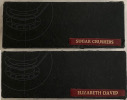
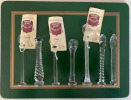
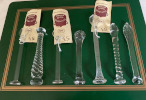

click on image to enlarge

Modern category
ref number:
11325 